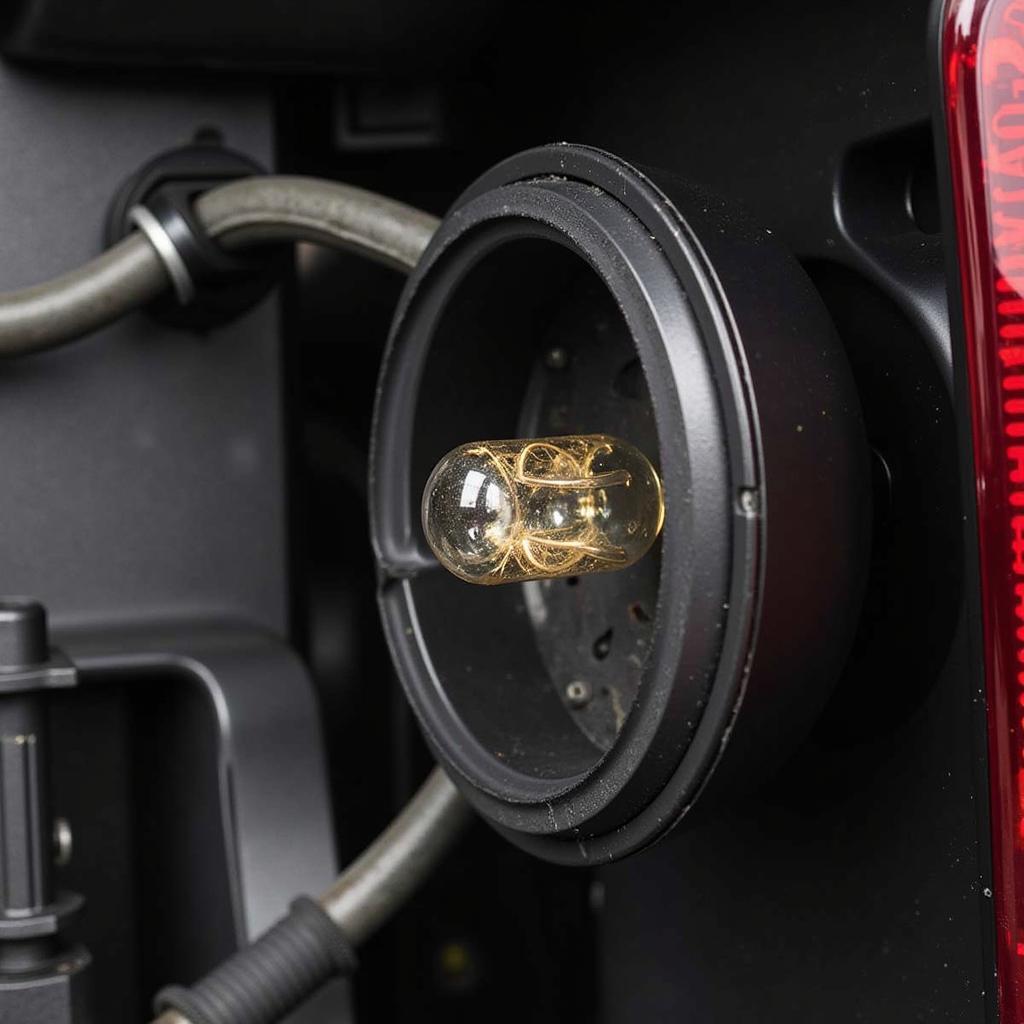Parasitic draw specs are crucial for diagnosing and resolving vehicle battery drain issues. A parasitic draw, also known as a “phantom load,” occurs when an electrical component continues to consume power even after the vehicle is turned off, potentially leading to a dead battery. Understanding these specs allows you to identify the culprit and get your car back on the road.
What Exactly Are Parasitic Draw Specs?
Parasitic draw specs define the acceptable amount of current draw in milliamps (mA) that a vehicle’s electrical system can consume when the ignition is off. Exceeding these specified limits indicates an excessive drain and points to a potential problem. These specs are often found in the vehicle’s service manual or online databases.
How to Find and Interpret Parasitic Draw Specs
Finding the correct parasitic draw specs for your specific vehicle is paramount. This often involves consulting the vehicle’s service manual or utilizing online resources like repair databases. These specs are usually expressed in milliamps and will vary depending on the vehicle’s make, model, and year. Remember, misinterpreting or using incorrect specs can lead to inaccurate diagnoses.
Measuring Parasitic Draw: Tools and Techniques
Accurately measuring parasitic draw requires the right tools and procedures. A digital multimeter with a milliamp current measuring function is essential. The process typically involves disconnecting the negative battery cable and connecting the multimeter in series between the cable and the battery terminal. This allows you to measure the current flowing out of the battery. It’s crucial to follow the correct procedure to avoid damaging the vehicle’s electrical system.
Common Causes of Excessive Parasitic Draw
Several common culprits can contribute to excessive parasitic draw. Faulty relays, interior lights left on, glove box lights, and malfunctioning door lock actuators are typical suspects. Aftermarket accessories installed incorrectly can also draw excessive current. Even a seemingly minor issue like a faulty clock or radio can significantly drain the battery over time.
How to Diagnose a Parasitic Draw Using the Specs
Once you have the correct parasitic draw specs and have measured the current draw, you can begin the diagnostic process. Compare the measured draw to the specified limit. If the measured draw exceeds the spec, you have confirmed an excessive drain. Then, systematically remove fuses one by one while observing the multimeter reading. A significant drop in current when a specific fuse is removed indicates the circuit containing the faulty component.
Using Remote Diagnostics and Software for Parasitic Draw Issues
Modern vehicles often allow for remote diagnostics and software updates to address certain electrical issues. Some diagnostic tools can remotely monitor the vehicle’s systems and pinpoint unusual power consumption patterns, helping identify the source of a parasitic draw without physical access to the vehicle. In some cases, software updates can resolve software-related parasitic draw problems.
 Remote Diagnostic Software Interface
Remote Diagnostic Software Interface
Preventing Parasitic Draw Problems
Preventing parasitic draw issues starts with good installation practices for any aftermarket accessories. Regularly checking your vehicle’s electrical system and promptly addressing any known issues can also prevent future problems. Be mindful of leaving interior lights on and ensure the glove box and trunk are properly closed.
Conclusion
Understanding parasitic draw specs is fundamental to maintaining your vehicle’s electrical health. By knowing how to find, interpret, and utilize these specs, you can effectively diagnose and resolve battery drain issues, preventing the inconvenience and potential danger of a dead battery. Regular maintenance and prompt attention to electrical problems are key to avoiding future parasitic draw issues, keeping your vehicle running smoothly.
FAQs
-
What is a normal parasitic draw reading? A normal parasitic draw reading varies depending on the vehicle but is generally between 25mA and 50mA. Always consult your vehicle’s specific specs.
-
Can a bad alternator cause a parasitic draw? While a bad alternator can lead to a dead battery, it doesn’t directly cause a parasitic draw. It prevents the battery from recharging.
-
How long does it take for a parasitic draw to drain a battery? The time it takes depends on the severity of the draw and the battery’s capacity. A significant draw could drain a battery overnight, while a smaller one might take several days.
-
What happens if I ignore a parasitic draw? Ignoring a parasitic draw can lead to a dead battery, leaving you stranded. Repeatedly draining the battery can also shorten its lifespan.
-
Can I fix a parasitic draw myself? Depending on the cause, you may be able to fix it yourself. However, more complex issues may require professional assistance.
-
How often should I check for parasitic draw? It’s a good idea to periodically check, especially if you notice your battery draining faster than usual.
-
What are the symptoms of a parasitic draw? The most common symptom is a dead battery, especially after the vehicle has been parked for a while. Other symptoms may include dimming headlights or slow engine cranking.


